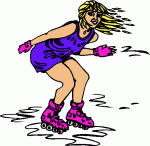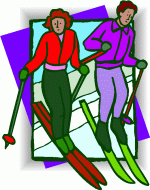![]() Names of Japan
Names of Japan
Japan is called either “Nihon” or “Nippon.” Though both pronunciations are correct, the use of “Nihon” was revealed to be much more common in a recent survey conducted by the National Institute of Japanese Language. The word “Japanese people” is pronounced as Nihonjin about 98 % of the time and The word “Japanese language” is pronounced as Nihongo about 99.5 % of the time. The official name of the Bank of Japan is Nippon Ginko (ginko = bank) but many people call it Nihon Ginko. “Nippon” is often preferred for official purposes and some international sports events such as the Olympic Games and World Cup.

“Nihon” or “Nippon” are both written in the Chinese characters on the left. The meaning of the first character, 日, is “the sun” and the second character, 本, is “origin”. So 日本 is often translated into English as “Land of the Rising Sun.” (Source: Wikipedia, Asahi Shinbun)
![]()
![]() なにを したいですか。What Do You Want to Do?
なにを したいですか。What Do You Want to Do?
Look at the following people and watch how they answer the question, なにを したいですか。
なにを したいですか。
|
なにを したいですか。
|
なにを したいですか。
|
 |
 |
 |
がっこうに いきたいです。
|
はしりたいです。
|
スケートを したいです。
|
なにを したいですか。
|
なにを したいですか。
|
なにを したいですか。
|
 |
 |
 |
スキーを したいです。
|
べんきょうしたいです。
|
うたを うたいたいです。
|
![]() たなかさん
たなかさん
Read the following passage about たなかさん to see if you can understand it.
あしたは どようびですから、がっこうは ありません。わたしは こうえんで ともだちと スケートを したいです。それから カラオケで うたを うたいたいです。べんきょうは したくありません。でも(=But) らいしゅう(=next week)の げつようびに すうがくの テストが ありますから、にちようびに すうがくの べんきょうを します。すうがくの じゅぎょうは すきですが、テストは あまり すきじゃありません。Did you understand? Let’s check how well you comprehend the paragraph. Answer the following questions in English.
Click each question to see whether you answered correctly.
- Why will there be no school tomorrow? Because it is Saturday tomorrow.
- What does たなかさん want to do at the park? She wants to skate with her friends.
- What does たなかさん want to do after that? She wants to go to Karaoke.
- What does たなかさん not want to do on Saturday? She doesn’t want to study.
- What will たなかさんstudy on Sunday? She will study mathematics.
- Why will she do it? Because there will be a math test next Monday.
- What does she like about mathematics? She likes math classes.
- What does she not like about mathematics? She doesn’t like math tests.
In the passage above, two sentence connectors, から (…, so…) and が (…but …), were introduced. Let’s take a look at more examples:
から
あしたは げつようびですから、がっこうに いきます。
Tomorrow is Monday, so I will go to school.
テストが ありますから、べんきょうします。
I will have a test, so I will study.
が
にほんごは すきですが、すうがくは すきじゃありません。
I like Japanese but I don’t like mathematics.
スキーを しますが、スケートは しません。
I ski but I don’t skate.
![]() Writing Practice
Writing Practice
Answer the following questions in complete sentences in Japanese using what you have learned in this course. Click each question to see a possible response.
- にちようびに なにを したいですか。 テニスを したいです。
- どようびに なにを したいですか。 テレビを みたいです。
- きょう なにを したいですか。おんがくを ききたいです。
- あした なにを したいですか。 ショッピング・センターに いきたいです。
- きんようびに なにを したいですか。スケートを したいです。
![]() Writing Practice: Either から or が
Writing Practice: Either から or が
Using either から or が, connect two sentences into one.
Check each sentence to see if you have done it correctly.
- あしたは どようびです。がっこうに いきません。あしたは どようびですから、がっこうに いきません。
- あしたは どようびです。がっこうに いきます。あしたは どようびですが、がっこうに いきます。
- わたしは テニスが すきです。テニスを します。わたしは テニスが すきですから、テニスを します。
- わたしは テニスが すきじゃありません。テニスを します。わたしは テニスが すきじゃありませんが、テニスを します。
- ほんやに いきます。ほんを かいます。ほんやに いきますから ほんを かいます。
- ほんやに いきます。ほんを かいません。ほんやに いきますが ほんを かいません。
![]() Graded Assignments
Graded Assignments
Please return to the Section 2 Tasks & Assignments folder to complete the graded assignments for Section2, Part A.

